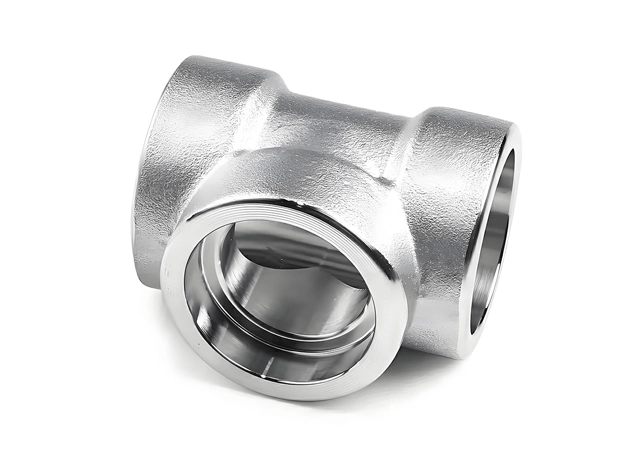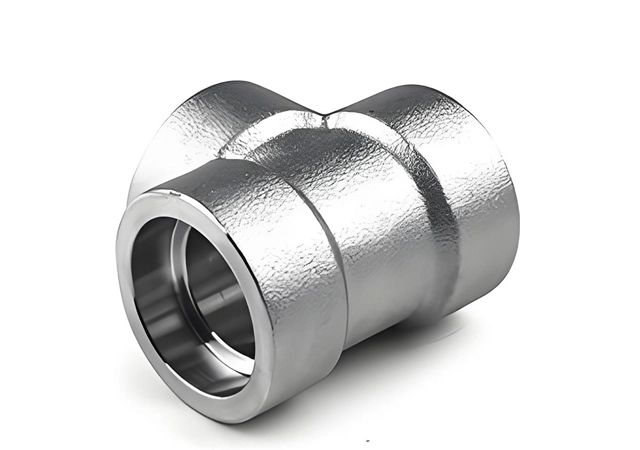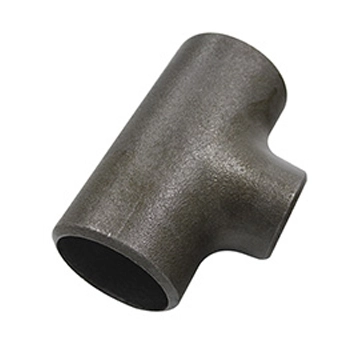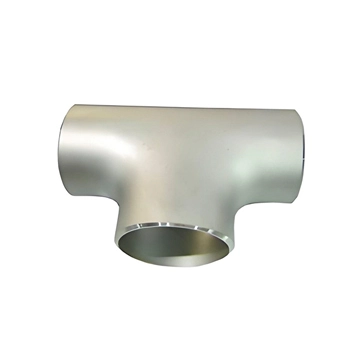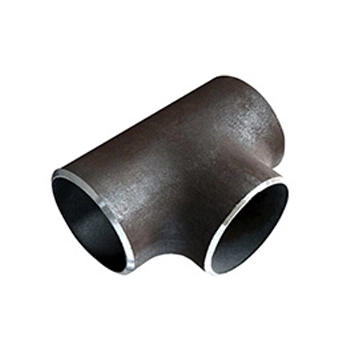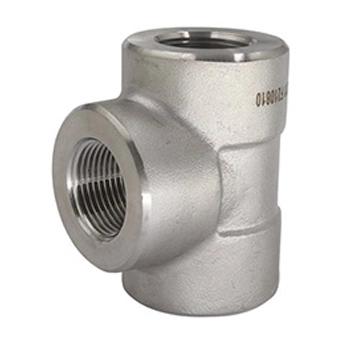A Socket Weld Tee is a type of pipe fitting designed to create a 90-degree branch from a main pipe. It is commonly used in high-pressure applications and is known for its strength and durability.
The fitting has a socket or recessed area that allows the pipe to be inserted before welding, creating a strong, leak-proof seal. This type of fitting is ideal for applications requiring high structural integrity and minimal leakage.
Equal Tee: All three openings are the same size.
Reducing Tee: The branch connection is smaller in size than the main pipe.
Design:Shaped like the letter "T" with three openings: one inlet and two outlets (or vice versa).
Each opening has a socket (recessed area) to accommodate the pipe.
Connection Method:The pipe is inserted into the socket and welded around the joint.
A small gap is left between the pipe end and the bottom of the socket to allow for thermal expansion and prevent stress during welding.
Materials:Commonly made from materials like carbon steel, stainless steel, alloy steel, or other metals, depending on the application.
Sizes:Typically used for small-bore piping systems, with sizes ranging from 1/8 inch to 4 inches (DN6 to DN100).
Socket Weld Tees are typically manufactured in accordance with the following standards:
ASME B16.11: Specifies dimensions, tolerances, and manufacturing requirements for forged fittings, including Socket Weld Tees.
MSS SP-43: Provides specifications for forged steel fittings.
API 590-605: Used for pipeline fittings.
EN10253-2: European standard for steel fittings for pipelines.
Carbon Steel: ASTM A105, ASTM A350 LF2/LF3, ASTM A694 F42/F46/F56/F60/F65, P235GH, P265GH, P280GH, P355GH.
Alloy Steel: ASTM A182 F11, F12, F5, F9, F91, F92, F22.
Stainless Steel: ASTM A182 F304/304L/304H, 316/316L, 321, 310S, 317, 347, 904L, 1.4404, 1.4437.
Duplex Stainless Steel: ASTM A182 F51, F53, F44.
High Strength: Provides a robust and durable connection.
Leak-Proof: Welding ensures a tight seal, making it suitable for high-pressure systems.
Smooth Flow: Minimizes turbulence and pressure drop in the pipeline.
Compact Design: Ideal for small-bore piping systems where space is limited.
Limited to Small Sizes: Not suitable for large-diameter pipes.
Difficult to Disassemble: The welded joint makes it challenging to remove or replace the fitting.
Requires Skilled Labor: Proper welding is essential to ensure a strong and leak-proof connection.

 EN
EN
